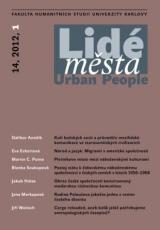Kult božských soch a průvodiče mezilidské komunikace ve starosemitských civilizacích
DOI:
https://doi.org/10.14712/12128112.3522Klíčová slova:
Ancient Near East, ancient Semitic civilisations, Mesopotamia, Syria, Israel, religion, cult of divine statues, idols, ethical norms of communicationAbstrakt
This paper deals with some problems concerning divine images in ancient Semitic religions. As an introduction, it presents a survey of information from primary sources. The archaeological evidence of Semitic cult statues is very sparse. We can find their representations only in some stone reliefs and in the presentation scenes of cylinder seal motifs. There are some written materials: sporadic references in royal inscriptions, a small number of cultic texts with a complete description of the purifying rituals for a new or renewed divine statue (the so called «mīs pî» texts in Mesopotamia), other references can be found in mythic and ritual texts (for ex. in the Epic of Erra, in the Ugaritic and in the Emar ritual texts) or anti-idolatrous polemics in the Old Testament. According to the literary documentation, the „idolatry“ (from the Greek eidōlon, image, portrait) of pre Judaic and pre Islamic Semites might be defined as the worship of an object considered as a legitimate substitute for the divine in the cult, but not as a „living“ entity. These vehicula of the divine presence played an essential role in many important rituals and regular religious ceremonies in the temple area and sometimes even outside the sanctuaries. However, the donation of food and drink to the images of gods (i.e. the presentation of sacrifices and libations), the giving of votive gifts, the anointing with oil and washing the mouth of statues, their ritual fashioning and clothing, and finally, their taking to bed on purpose to evoke either symbolic divine rest or „sacred marriage“ (hieros gamos) represent the core of this ritual complex in the temple. In the final part of this paper, the question of finding some correlates of these forms of idol’s worship in a sphere of social ethics is treated. For example, the two first tablets of the Gilgamesh Epic reveal that fundamental ritualised concomitants of interpersonal communication (the common consummation of food and drink; the exchange of conventional gifts; the anointing with oil and washing of the guest; the provision of clothes; the offering of „sexual favours“) correspond to the cultic rules of communication with the sacred through idolatry.
Stahování
Publikováno
Jak citovat
Číslo
Sekce
Licence

Tato práce je licencována pod Mezinárodní licencí Creative Commons Attribution-NonCommercial-NoDerivatives 4.0.


